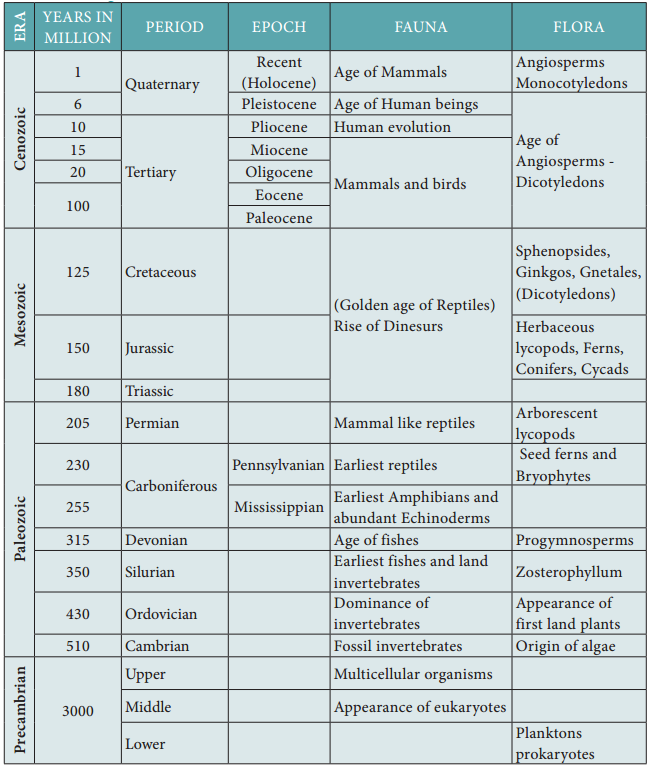Learninsta presents the core concepts of Biology with high-quality research papers and topical review articles.
Geological Time Scale
The duration of the earth’s history has been divided into eras that include the Paleozoic, Mesozoic, and Cenozoic. Recent eras are further divided into periods, which are split into epochs. The geological time scale with the duration of the eras and periods with the dominant forms of life is shown in Table 6.1.
The Paleozoic era is characterized by abundance of fossils of marine invertebrates. Towards the later half, other vertebrates (marine and terrestrial) except birds and mammals appeared.
The six periods of Paleozoic era in order from oldest to the youngest are Cambrian (Age of invertebrates), Ordovician (fresh water fihes, Ostracoderms, various types of Molluscs), Silurian (origin of fishes), Devonian (Age of fihes, many types of fishes such as lung fishes, lobe fined fishes and ray fined fihes), Mississippian (earliest amphibians, Echinoderms), Pennsylvanian (earliest reptiles), Permian (mammal like reptiles).

Mesozoic era (dominance of reptiles) called the Golden age of reptiles, is divided into three periods namely, Triassic (origin of egg laying mammals), Jurassic (Dinosaurs were dominant on the earth, fossil bird – Archaeopteryx) and Cretaceous (extinction of toothed birds and dinosaurs, emergence of modern birds).
Cenozoic era (Age of mammals) is sub divided into two periods namely Tertiary and Quaternary.
Tertiary period is characterized by abundant mammalian fauna. This period is subdivided into five epochs namely, Paleocene (placental mammals, Eocene (Monotremes except duck billed Platypus and Echidna, hoofed mammals and carnivores), Oligocene (higher placental mammals appeared), Miocene (origin of first man like apes) and Pliocene (origin of man from man like apes).
Quaternary period witnessed decline of mammals and beginning of human social life. The age of fossils can be determined using two methods namely, relative dating and absolute dating. Relative dating is used to determine a fossil by comparing it to similar rocks and fossils of known age. Absolute dating is used to determine the precise age of a fossil by using radiometric dating to measure the decay of isotopes.